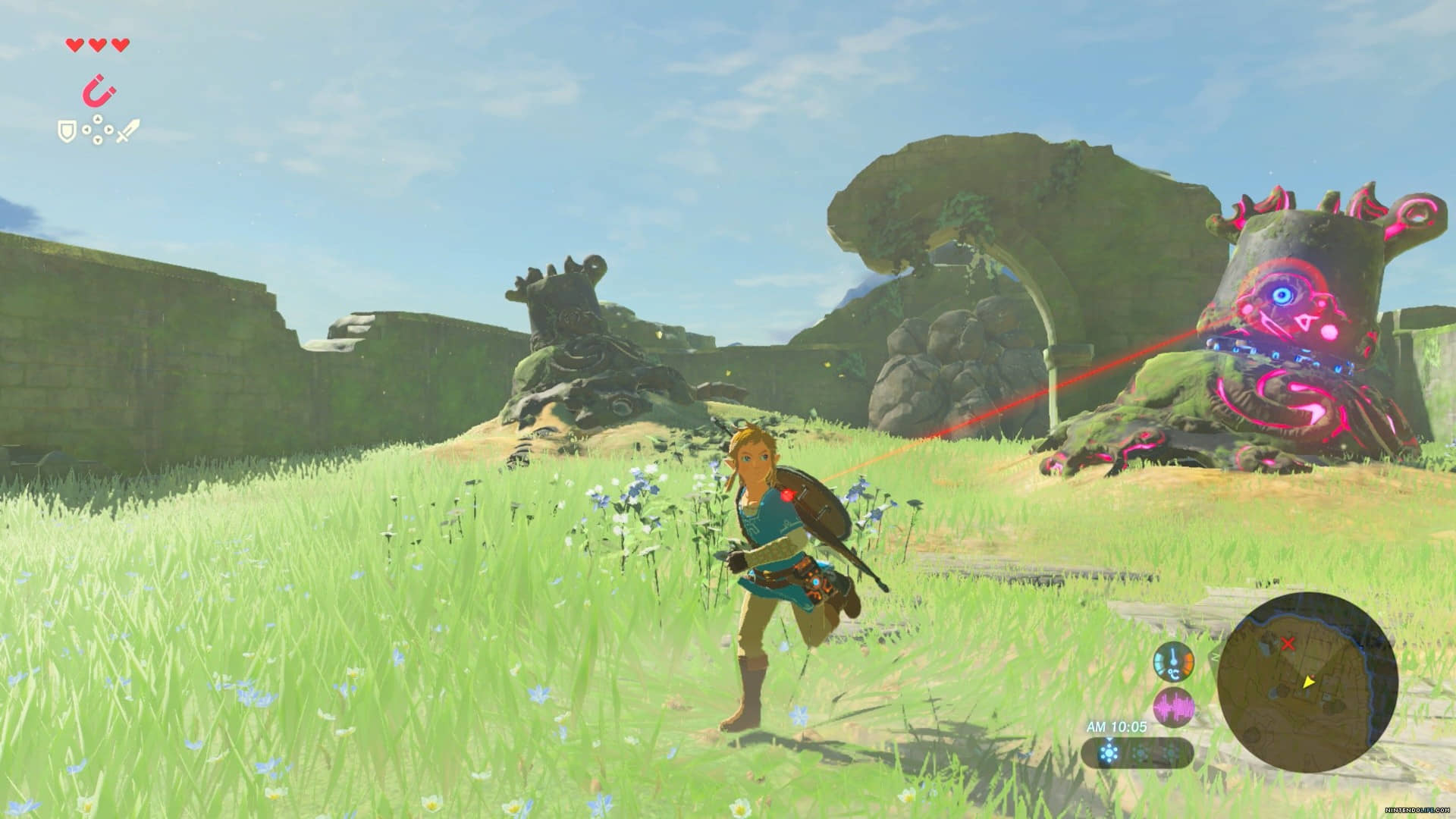[Nintendo Switch] The Legend of Zelda: Breath of the Wild
The Legend of Zelda: Breath of the Wild is a 2017 action-adventure game developed and published by Nintendo for the Nintendo Switch and Wii U consoles. Breath of the Wild is part of the Legend of Zelda franchise and is set at the end of the Zelda timeline; the player controls Link, who awakens from a hundred-year slumber to defeat Calamity Ganon and save the kingdom of Hyrule.
Similar to the original The Legend of Zelda (1986) game, players are given little instruction and can explore the open world freely. Tasks include collecting multipurpose items to aid in objectives or solving puzzles and side quests for rewards. The world is unstructured and designed to reward experimentation, and the story can be completed in a nonlinear fashion.
Development of Breath of the Wild lasted five years. Wanting to reinvent the series, Nintendo introduced elements such as a detailed physics engine, high-definition visuals, and voice acting. Monolith Soft, known for their work in the open-world Xenoblade Chronicles series, assisted in designing landscapes and topography. The game was originally planned for release in 2015 as a Wii U exclusive title but was delayed twice. Released on March 3, 2017, Breath of the Wild was a launch game for the Nintendo Switch and the final Nintendo-published game for the Wii U. Two downloadable content expansions were released later in 2017.
Breath of the Wild received acclaim for its open-ended gameplay and attention to detail, and has been cited as one of the greatest video games of all time. Critics called it a landmark in open-world design, although it received minor criticism for its technical performance at launch. It won numerous awards, including several game of the year honors. By 2021, it had sold nearly 24 million copies, making it the best-selling Zelda game and one of the best-selling video games of all time. A sequel is in development for the Nintendo Switch, while a crossover with the Dynasty Warriors series, Hyrule Warriors: Age of Calamity, was released in 2020.

Breath of the Wild is an action-adventure game set in an open world where players are tasked with exploring the kingdom of Hyrule while controlling Link. Breath of the Wild encourages nonlinear gameplay, which is illustrated by the game’s lack of defined entrances or exits to areas, scant instruction given to the player, and encouragement to explore freely. Breath of the Wild introduces a consistent physics engine to the Zelda series, letting players approach problems in different ways rather than trying to find a single solution. The game also integrates a “chemistry engine” that defines the physical properties of most objects and governs how they interact with the player and one another. For example, during thunderstorms, metal objects will attract powerful lightning strikes; during a storm, therefore, a player must be careful not to wear metal, but may also throw metal objects at enemies to draw lightning to them. These design approaches result in a generally unstructured and interactive world that rewards experimentation and allows for nonlinear completion of the story.
As Link, players can perform actions such as running, climbing, swimming, and gliding with a paraglider, although Link is limited by his stamina. Link can procure items from the environment, including weapons, food, and other resources. Unlike previous Zelda games, weapons and shields degrade through use. Many items have multiple uses; for example, wooden weapons can light fires, wooden shields can collect incoming enemy arrows, and shields can be used as makeshift snowboards. Players can obtain food from hunting animals, gathering wild fruit, or collecting parts of defeated enemies. By cooking combinations of food or materials, the player can create meals and elixirs that can replenish Link’s health and stamina, or provide temporary status bonuses such as increased strength or resistance to heat or cold. An important tool in Link’s arsenal is the “Sheikah Slate”, which can be used to mark waypoints on a map and as an in-game camera. Over the course of the game, Link can collect powers to add to the Slate, including the abilities to create remote bombs, manipulate metal objects, form ice blocks on watery surfaces, and temporarily stop objects in time. In combat, players can lock onto targets for more precise attacks, while certain button combinations allow for advanced offensive and defensive moves. Players may also defeat enemies without weapons, such as by rolling boulders off cliffs into enemy camps.
One of the major gameplay mechanics is the ability to climb almost anything in the game. With it, players can reach areas without following a particular path.
Besides exploration, players can undergo quests or challenges to obtain certain benefits. Activating towers and shrines adds waypoints that the player may warp to at any time. Activating towers also adds territories to the map, although location names are not added until the player explores that area. Dotted throughout Hyrule are shrines that contain challenges ranging from puzzles to battles against robotic opponents. Clearing shrines earns Spirit Orbs. After earning four of these orbs, they can be traded for additional health or stamina points. Scattered across Hyrule are small puzzles that reveal Korok Seeds, which can be traded to expand inventory size for weapons, shields, and bows. Towns serve as hotspots for quests, sidequests, and shops selling materials and clothing. Hikers and other travelers offer sidequests, hints, or conversation. Additionally, players can scan Amiibo figures against their controller to summon items or call Link’s horse Epona from previous Zelda games and Wolf Link from Twilight Princess.
DOWNLOAD: The Legend of Zelda: Breath of the Wild
BACKUP LINK: The Legend of Zelda: Breath of the Wild
